A lot has been written about the numerous health and environmental benefits of plants to pollinators and humans. For those of us who work with plants every day, that’s “gardening 101.”
Plants improve quality of life. They help us feel good. They provide food and shelter. And through photosynthesis, flowers, plants and trees release oxygen and help mitigate the effects of climate change.
Plants Improve Quality of Life
Be mindful to include “plants with benefits” in landscape designs and projects. Educating clients about why you’ve done so is a value-added service our industry can seize. It’s also our industry’s rightful legacy.
Dr. Charlie Hall, a well-known horticultural economist and Ellison Chair in International Floriculture at Texas A & M University, offers wonderful background and insights on the role of plants in human quality of life.
He writes: “Green industry products and services improve emotional health, boost seniors’ well being, enhance hospital recovery rates, enhance employee motivation and ideas, strengthen feelings of compassion, decrease worry and anxiety, express feelings of compassion, build stronger communities, mitigate environmental externalities, and improve the economic value of homes – just to name a few of the benefits.”
Loma Vista Nursery’s healthy plants are grown with benefits in mind. Here are a few of our favorites.
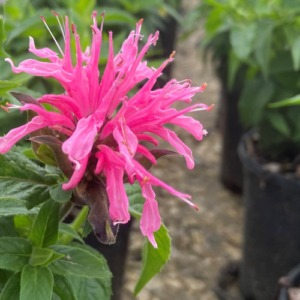
Bee Balm (Monarda)
Bee Balm
A member of the mint family, bee balm, also known as Monarda and wild bergamot, is a perfect addition to a summer pollinator garden. Bee balm attracts hummingbirds, bees, butterflies and moths. Petals are bright pink, purple or red.
Plant bee balm in well-drained soil about 18 to 24 inches apart. This perennial grows between 2- and 4-feet tall and prefers full sun. Plant in USDA Hardiness Zones 3 to 9.
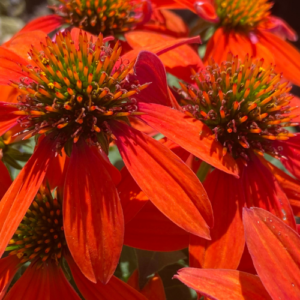
Sombrero® Adobe Orange Coneflower (Echinacea x hybrida)
Echinacea
Whose anxiety level doesn’t drop just looking at coneflowers’ gorgeous blooms? There’s no shortage of eye-pleasing colors with this perennial favorite. A member of the daisy family and also known as echinacea, cornflowers are available in bright orange, yellow, purple, pink, white and red.
In the garden, echinacea almost dances in full sun as it attracts bees and butterflies. Average height is 48 inches. Space 12 to 24 inches apart to accommodate spread. Plant in USDA Hardiness Zones 3 through 9.
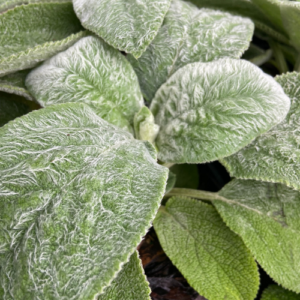
Helen Von Stein Lamb’s Ear (Stachys byzantina Helen)
Lamb’s Ear
Children delight over lamb’s ear because of its soft feel, which makes it a perfect introduction to plant life. Also known as Stachys byzantina, this plant is a perennial herb. If you’re designing an outdoor space that has little to no available irrigation, lamb’s ear is a good choice.
Drought tolerant, use lamb’s ear as ground cover or as a companion plant at the base of Russian sage, sedum and Shasta daisies. It also does well as filler in containers. Lamb’s ear likes full sun to partial shade. It produces red-purple flowers atop slender stems in mid-summer. Maximum height is 18 inches. Plant in USDA Hardiness Zones 4 to 8.
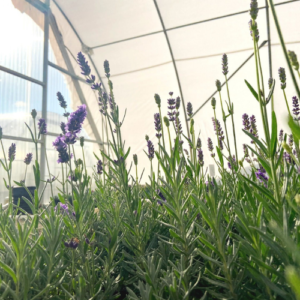
Lavender ‘SuperBlue’ (Lavandula angustifolia ‘SuperBlue’)
Lavender
Hang a sachet of cut lavender flowers on the bedpost and you may get a better night’s sleep. From improving slumber to relieving anxiety, fragrant lavender has a plethora of benefits that promote health. It’s been known to lift mood, calm the nervous system and lower blood pressure.
Plant lavender in containers for your patio, home and office. In the garden, lavender attracts bees and butterflies and is generally low maintenance. It is versatile in small spaces or in mass plantings. Lavender requires full sun and blooms in summer. It has a mature height and width of 10 to 12 inches. Plant in USDA Hardiness Zones 5 to 8.
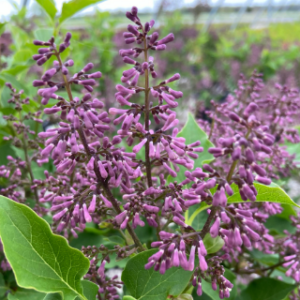
Miss Kim Korean Lilac (Syringa pubescens subsp. patula ‘Miss Kim’)
Lilac
Lilacs have similar health and lifestyle benefits to lavender. One of spring’s best gifts, their scent reduces anxiety, lifts moods and centers awareness back on deep breathing. Take cuttings from the shrub to create floral arrangements in the home.
We grow Miss Kim Korean Lilac. This compact shrub blooms just a bit later than other varieties and has a wonderful fragrance with good fall color. It grows slowly to reach a mature height and spread of about 6 to 8 feet and has a rounded habit. Plant in full to partial sun in USDA Hardiness Zones 4 to 8.
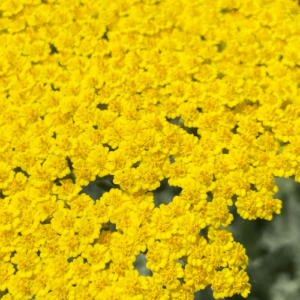
Moonshine Yarrow (Achillea Moonshine)
Yarrow
If you’re looking to brighten a spot in your home or office, yarrow’s vibrant blooms make a sunny addition as cut flowers. On the back patio, yarrow works as a thriller in containers. We grow a few varieties of yarrow at Loma Vista Nursery, including Moonshine Yarrow.
Good for drought-resistant gardens and perennial borders, Moonshine Yarrow won’t reseed or spread. A reliable rebloomer, Moonshine Yarrow has silver-gray foliage and lemon-yellow flower clusters. Mature height is 18 inches. Spread is 24 inches. Plant in USDA Hardiness Zones 3 to 9.
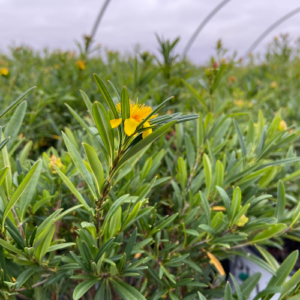
Sunny Boulevard® St. John’s Wort (Hypericum x)
St. John’s Wort
This perennial gets its name because it blooms in late June, around the time of the feast of St. John the Baptist. We grow Sunny Boulevard® St. John’s Wort, a compact shrub that blooms from July to September.
Sunny Boulevard® St. John’s Wort has rich yellow flowers on tightly branched stems. It provides winter interest, and is drought and salt tolerant. The shrub matures to about 24 to 36 inches tall and wide. Place in full sun., in USDA Hardiness Zones 4 to 8.
Our healthy plants are grown for Midwest landscapes. Take a look through Loma Vista Nursery’s plant catalog for more information.
Learn More About Plants from Loma Vista Nursery!
Loma Vista Nursery’s staff members are experts in the field. We love helping people learn and understand more about healthy plants that perform well in Midwest landscapes. Feel free to email us at sales@lomavistanursery.com or call us at (785) 229-7200 to get help with your plant-related questions.
Connect with us!
Stay up-to-date on our plant recommendations, growing tips and more by following us on social media.
